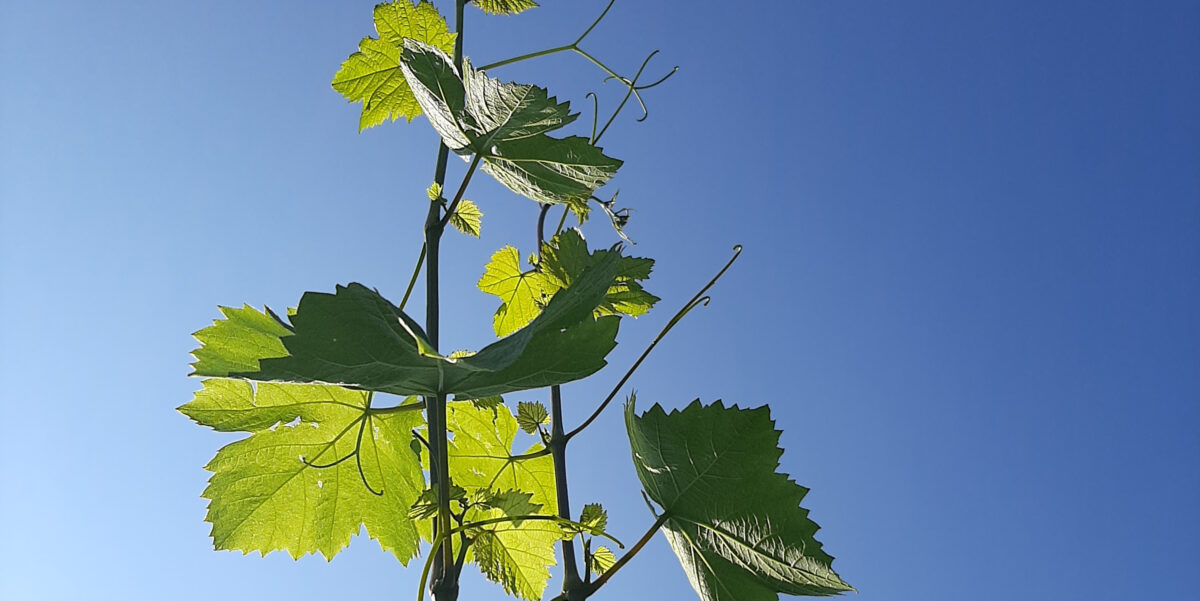“Martissima is meant to be a provocation.” — Marta Venica
The name comes from jokes among Marta Venica’s friends. They added the “issima” to emphasize what she winkingly calls her “superlatively good, but above all, bad sides.” Marta launched her project in 2019 with the idea of giving fresh expression to practices rooted in tradition: organic farming carried out by hand and horse, and a focus on Collio’s native and traditional grapes vinified for freshness, texture, and verve. She makes just two wines. Each is a lyrical, free verse poem to nature, spirit, and place.
Marta Venica
“I have breathed the world of wine since I was a child. My dad” — Giorgio Venica, of the benchmark Venica & Venica estate in Dolegna — “has always been involved in the production of wine in the family business. At 18, I started to support him during harvest. My studies at university and the experiences I’ve had around the world have only made me more passionate,” says Marta.
After earning a degree in viticulture and enology from the university at Udine, which included a year at Geisenheim, Marta plunged into a range of wine experiences. In addition to having helped with harvest at the family domain since 2013, she has also worked at wineries “where the picking starts when the home harvest is over,” as she puts it. In 2014, it was Ceretto in Castiglione Falletto; in 2015, it was Dönnhoff in the Nahe, “the most amazing experience to understand what a meticulous selection of the grapes means;” in 2016, at Pierre Peters in the Côte de Blancs “for the real meaning of terroir;” in 2017, with Elisabetta Foradori in Trentino for a high-level introduction to biodynamics.
But in 2018, her life was transformed by a stage at the pioneering Patagonian biodynamic winery, Bodega Chacra. “The energy that allowed me to start my project surely comes from here. On the flight home, I decided I wanted to express my creativity through what I like to do most: being in contact with nature and spending the days in my corner of paradise.”
Collio
That corner is the small, hilly part of easternmost Friuli known simply as Collio (“hills”). It’s a place of complex confluences. Perched between Italy and Slovenia, the Alps and the Adriatic, its diverse geology, topography, cultures, and traditions all mark the region’s wines. As Marta puts it: “Collio represents the geographical limit between the Mediterranean and central Europe in climate, tastes, agriculture, and way of life.”
Despite Collio’s small size, it is hard to speak of a single identity for such a mosaic. Marta, together with her like-minded partner (and fellow Schatzi!) Mitja Sirk, is putting her own stamp on a style we might term “purist.” It’s a shift toward native and traditional grapes, responsive, organic farming, spontaneous ferments, minimal skin contact, and long lees aging, all yielding wines of vitality and character.
Vineyards and Farming
Marta now owns and works just one vineyard. It’s a small, low-slung, southeast-facing plot on ponca, a sedimentary rock of layered sandstone and marl. The plot is divided into four small parcels completely surrounded by forest. It’s planted to a mix of malvasia, ribolla gialla and friulano “planted randomly in the 70s,” as Marta notes, among vines of merlot and refosco. Farming organically, Marta’s emphasis is on handwork — and horsework. She relies on her pair of Arabians for the high-quality compost she uses to make her own organic fertilizer. Her aim is to stimulate the development of native microorganisms who, in her words, “permit a soil full of life.” Her hope is to incorporate more animals into the vineyards soon, to restore the natural balance that human influence has distorted.
Cellar
In the cellar, Marta’s objective is “to intervene as little as possible and maintain the integrity of the grapes.” For her Collio Bianco, a blend of equal percentages of malvasia, ribolla gialla, and friulano, the grapes are picked into boxes, pressed directly, and co-fermented. Fermentation starts spontaneously, two-thirds in stainless steel and one-third in barrique. If malolactic happens, she lets it. When fermentation finishes, she racks into tank, adds a judicious measure of SO2, and does battonage once a week for a month. For her Collio Rosso, which is mainly merlot with the animating addition of refosco, she relies on whole cluster fermentation in stainless steel for ten days. Fermentation finishes in barrique, the wine ages first in barrique, then in tank for one year. The wines then rest till bottling in May and enjoy one year of aging before release.







